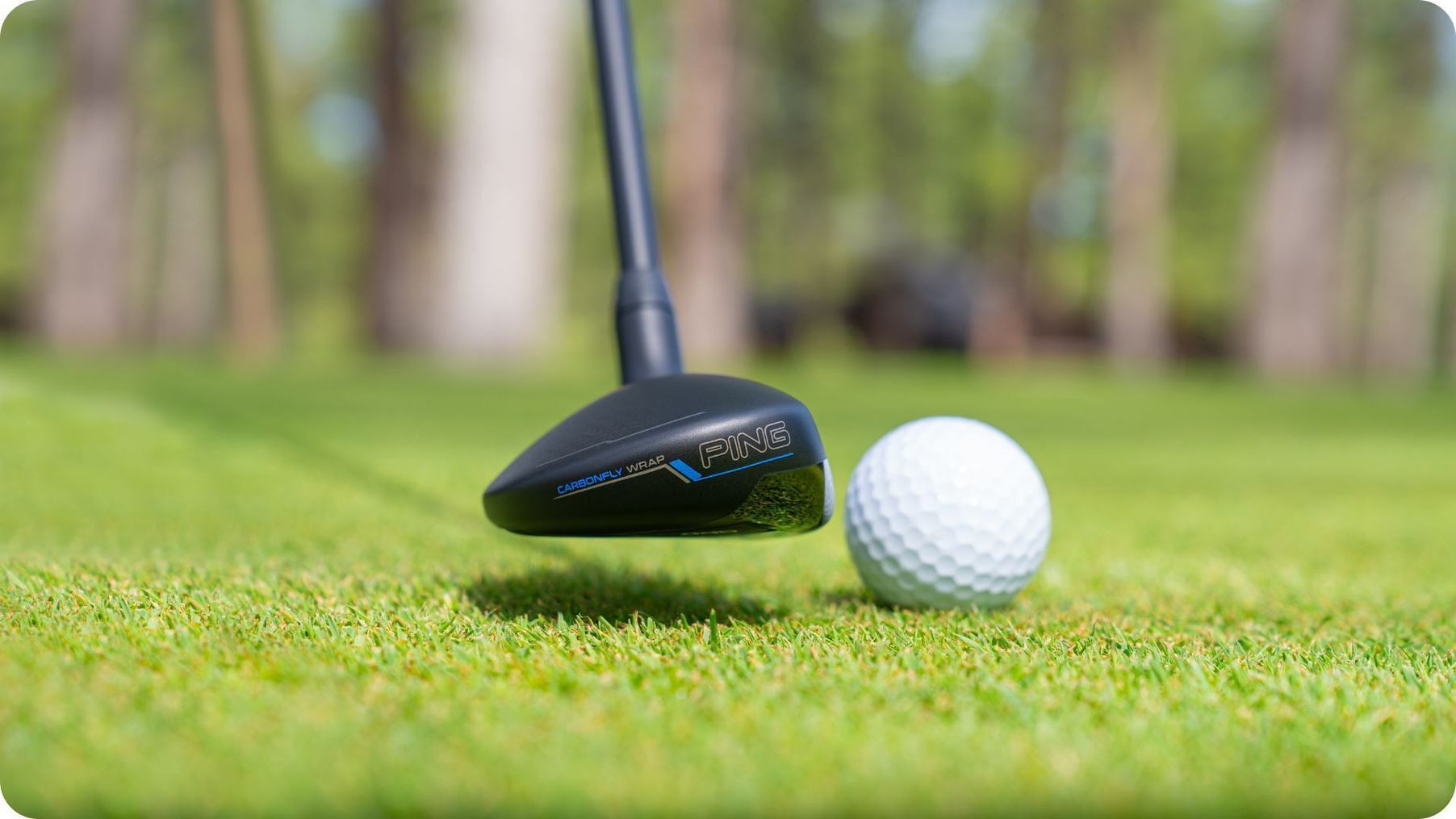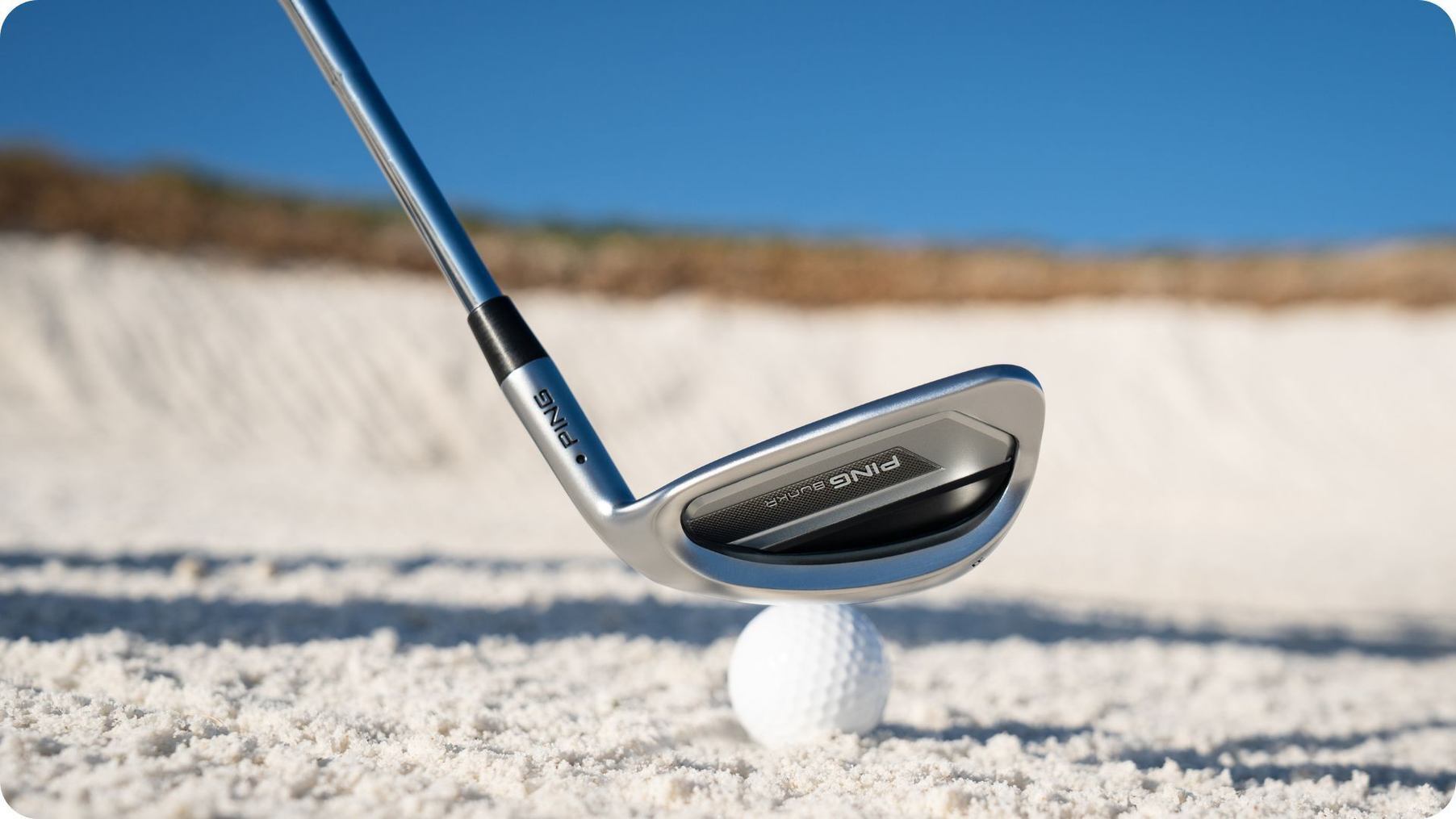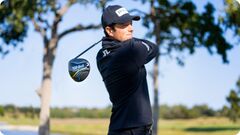Over 500 tour wins and 19 major championships have been attributed to one putter design.
That putter is the PING Anser, the genesis club created by engineer and frustrated golfer Karsten Solheim. Solheim’s objective was to simplify putting and improve performance on off-centre hits.
Solheim created the Anser putter in 1966. His design created a cavity that pushed weight to the extremities of the face and kept it square through impact. The putter made a distinctive noise when it struck the ball, which became the name of Solheim’s new golf club-making business, PING.
The Anser isn’t the only innovative design from PING. The iconic Eye 2 irons of the 1980s saw PING struggle to keep up with the demand, with long waiting lists developing as golfers clambered to get their hands on a set.
PING can also claim to be the pioneers of custom-fitting clubs for golfers. Their distinctive colour-coding system matches lie angle to the golfer's height, which PING still uses today.
Today, PING has built on its reputation for creating some of the best-engineered and designed clubs in the marketplace. The new G440 series builds on that reputation and supports strong existing products like the Blueprint irons and the S159 wedges.
We’re excited to introduce PING golf clubs to our range of fully customisable options at Nine By Nine Golf. PING clubs offer something for every level of golfer, from elite ball strikers to higher handicap golfers looking for more consistency in their golf equipment.
We’ll guide you through the following:
- Ping’s Key Categories
- What’s New For 2025
- Choosing Your Ping Clubs: How To Pick Your Optimal Bag
- Ping At Nine By Nine Golf
PING's Key Categories
For years, PING clubs were perceived to be the choice for players who struggled to strike the golf ball consistently. PING irons were cast steel rather than forged, and better players would always favour forged steel for its feel and feedback over cast steel irons like the PING Eye 2s.
However, over the years, PING irons have evolved to ensure that they offer something for every variety of player.
The Blueprint T is at the top end of the current PING iron range. Created from tour-inspired feedback, it features a clean, compact look preferred by better players and a narrower sole profile to aid turf interaction.
PING has engineered the mass to sit directly behind the sweetspot in each iron to improve acoustics and playability, while a tungsten screw positioned in the toe helps improve MOI.
The biggest news for the PING Blueprint T irons is that it is a forged head, created from soft 8620 carbon steel.
PING covers the player’s cavity market with the Blueprint S and i230 irons. The Blueprint S is also a forged iron and follows the highly successful S series irons, preferred by PING’s staff players from the late 2000s.
The PING blueprint S irons share the same tour-preferred shaping as the Blueprint T, but with an added cavity in the rear to help redistribute weight around the head's perimeter. PING further enhances weight saving and redistribution through its Precision Pocket Forging process, removing 10 grams of weight and re-allocating it in the head to increase MOI.
The i230s aren’t forged heads; however, their feel and playability are enhanced by PING's four-layer cavity badge positioned in the rear cavity to tune out vibrations. The PING i230 irons also incorporate activated elastomer low in the cavity to reduce the centre of gravity, while helping to improve ball speed across the face from the elastomer’s spring-like quality.
In the player’s performance iron category, PING's i530 iron features a multi-material hollow-bodied iron wrapped in a compact head. The hollow body design helps improve the soft forged face’s flexibility to create higher ball speeds at impact, which can appeal to low-to-mid handicap golfers, while retaining the feel and feedback that better players prefer.
For players who need the most help from their irons, the new PING G440 irons might provide the answer.
The multi-material game improvement iron features PING’s PureFlex badge, which expands and contracts to improve distance, while reducing vibrations in the head at impact to enhance feel.
The G440 iron benefits from a thinner face to enhance ball speeds. The saved weight from the thinner face is redistributed lower and deeper in the cavity to improve launch, spin, and MOI.
Most game improvement irons are often criticised for being ungainly-looking. Still, PING has managed to maintain an elegant, better player look for the G440 iron by shallowing the face height and reducing the blade length and topline.

Drivers
PING has offered three driver models to cater for different player profiles, going back to the G400 series from the late 2010s. In 2025, PING introduced the G440 drivers, which consist of:
- G440 Max - Standard model to fit the broadest range of golfing abilities
- G440 LS - a low spin model to suit better players
- G440 SFT - Straight Flight Technology, a draw-biased head for players who consistently struggle with slicing the ball.
PING added a new model in late 2023, the G430 10K, designed to breach the 10K MOI threshold for maximum stability, which found its way into tour players’ bags and high-handicap players.
The G440 series improves upon the previous G430 series by increasing the use of carbon fibre across the crown and chassis of the driver head. PING’s carbon fly wrap saves weight and can be repositioned in the head depending on the driver model to enhance spin and launch rates.
PING has also removed weight from the hosel section, providing more mass to be distributed within the head to maximise spin and launch rates.
The thinnest face PING has put into a driver before enhances performance by helping increase ball speeds across the face.
PING's use of turbulators on the crown improves aerodynamics, improving airflow across the face and clubhead speed.
You can have your PING G440 driver tuned more specifically to your needs through a 29-gram movable weight that can be positioned to enhance draw or fade bias, or for maximum stability in the rear of the head.
The G440 series also employs an adjustable hosel to increase or decrease loft by 1.5 degrees and flatten the lie angle by up to 3 degrees to further precisely tune the ball flight and spin characteristics you need.

Fairway Woods
The PING G440 Fairway Wood series extends into the fairway woods with a similar set-up of:
- G440 Max appeals to most golfers
- G440 LST, smaller head profile suited for players with faster swing speeds
- G440 SFT, designed for players fighting a slice
The PING G440 series fairway woods feature the same weight-saving around the hosel and carbonfly wrap, allowing the PING engineers to redistribute the internal mass depending on the head profile.
For the LS model, the weight is positioned closer to the face, the SFT has its weight positioned more in the heel area to allow the face to close quicker, and the Max model sees the weight pushed as far back from the face as possible for maximum stability.
Each model features a new steel face with weight positioned towards the heel and toe sections to improve ball speeds from off-centre strikes.
Hybrids
The PING G440 hybrid features the same technology as the drivers and fairway woods to enhance performance. It can be offered as a long iron replacement with an inbuilt fade bias or as a seven-iron alternative with a slight draw bias.

Wedges
PING has opted for precision and feel as the key performance indicators in its S159 wedges. 8620 carbon steel provides a soft feel for maximum feedback.
Stopping power is assured with PING’s wheel-cut precision grooves. The lower-lofted wedges (46-52 degrees) are milled to maximise the groove volume, while the more lofted wedges (54 - 62 degrees) feature more tightly packed grooves to further enhance stopping power.
The S159 wedges have 25 loft and grind combinations, ensuring a wedge design for every type of golfer and every type of course condition.
If you need more assistance escaping from bunkers, you can always opt for PING’s BunkR wedge.
Designed specifically for bunker play, the BunkR's Eye 2-inspired look features a wide sole and 14.5 degrees of bounce to help ease the sole through sand more effectively. The BunkR also has full-face grooves and 64 degrees of loft, which PING believes will encourage players to set up with a square face to play bunker shots.

What’s New For 2025
PING works on a two-year product cycle, so we can see how they move the game on from the previous generation when they launch new products.
We’ve spoken about PING’s focus on shedding more weight to improve clubhead speed, but PING has also worked hard on improving the G440's acoustics. The PING G425 drivers were critically acclaimed when they were launched; however, the black mark against those drivers was the distinctive loud noise at impact from the titanium head, which could put some golfers off.
At this moment, PING doesn’t have a G440 replacement for the G430 10K Max driver, but we wouldn’t rule out the possibility of a G440 derivative being released later.
PING has also not opted to create a mini driver yet but has chosen to extend its fairway wood offering with a new four-wood for the G440 Max, a new five-wood for the G440 LST, and a G440 HL (high launch) model, increasing the flexibility of its fairway wood offering.
Although PING launched the Blueprint irons last year, the models have gained more traction in 2025, with the Blueprint T competing against heavyweight models like the Mizuno Pro 241s and the Blueprint S competing against the Srixon ZXi 5/ZXi 7, TaylorMade P7MC, and Titleist T100/150 irons.
Choosing Your PING Clubs: How To Pick Your Optimal Bag
PING follows a similar pattern to other manufacturers when it comes to its driver and fairway woods range.
The PING G440 LST will suit the better player who needs less spin on their drives to optimise their numbers. Golfers who struggle with a slice can opt for the highly successful SFT model. Thanks to its stability, the PING G440 Max driver can be fitted for a wide variety of players.
PING’s iron ranges open up opportunities for blended sets. The better player might opt for the Blueprint S or i230s for the longer irons before switching to the Blueprint T for precision and accuracy in the shorter irons.
Higher handicap golfers might need the power and higher launch of the G440 long irons before switching to the i530s or even using the i530s for mid-irons and then Blueprint S for the shorter irons.
Fitting nicely with a set of blended PING irons, the S159 wedges offer flexibility in loft and grind options to ensure consistent distance gapping throughout.
PING At Nine By Nine Golf
We’re delighted to have PING on board. As we mentioned at the start, PING pioneered the concept of each golfer being fitted for their golf clubs. The distinctive colour-coded system indicates lie angles on PING clubs and is still used today.
This system is highly useful for fitting, but PING has gone further by using movable weights and adjustable hosels in its woods and hybrids, which allow precise flight and shape patterns to be locked in.
Precision wedge play can also be achieved by fitting each golfer for the correct grind based on the type of golf courses they play to ensure optimal turf interaction.
Blending PING irons is easy with the assistance of an experienced fitter. We can ensure we create the perfect set for you by analysing your numbers from your existing iron set to ensure we create the perfect distance gapping, launch, and spin numbers.
We can tailor your PING golf clubs to optimise distance and accuracy through our extensive selection of shafts from manufacturers such as Mitsubishi Chemical, Graphite Design, Fujikura for carbon composite shafts, or True Temper, KBS, and Project X for steel shafts.
To experience how PING clubs could benefit your golf game, click here to book a custom fitting session at Nine By Nine Golf.
